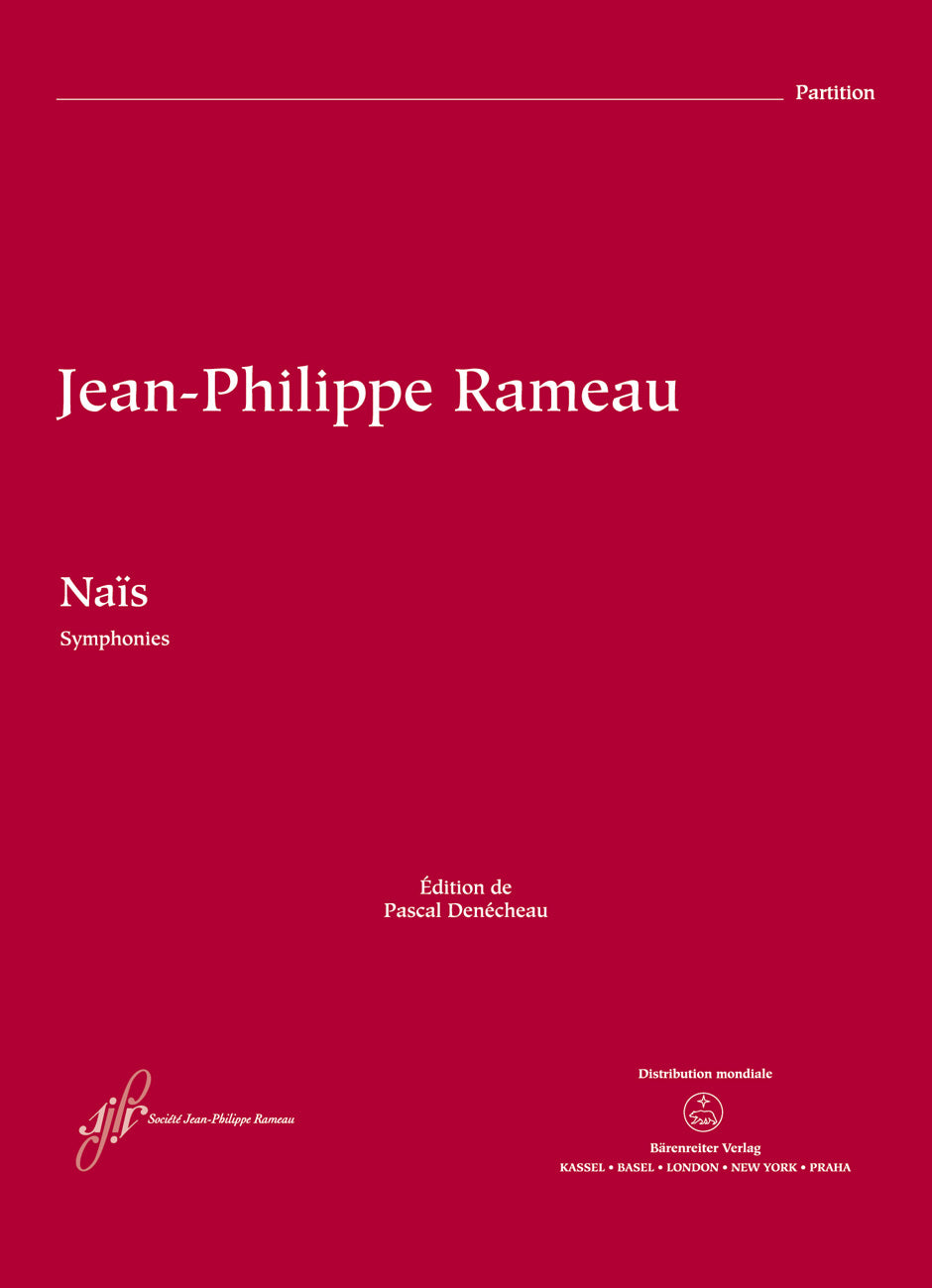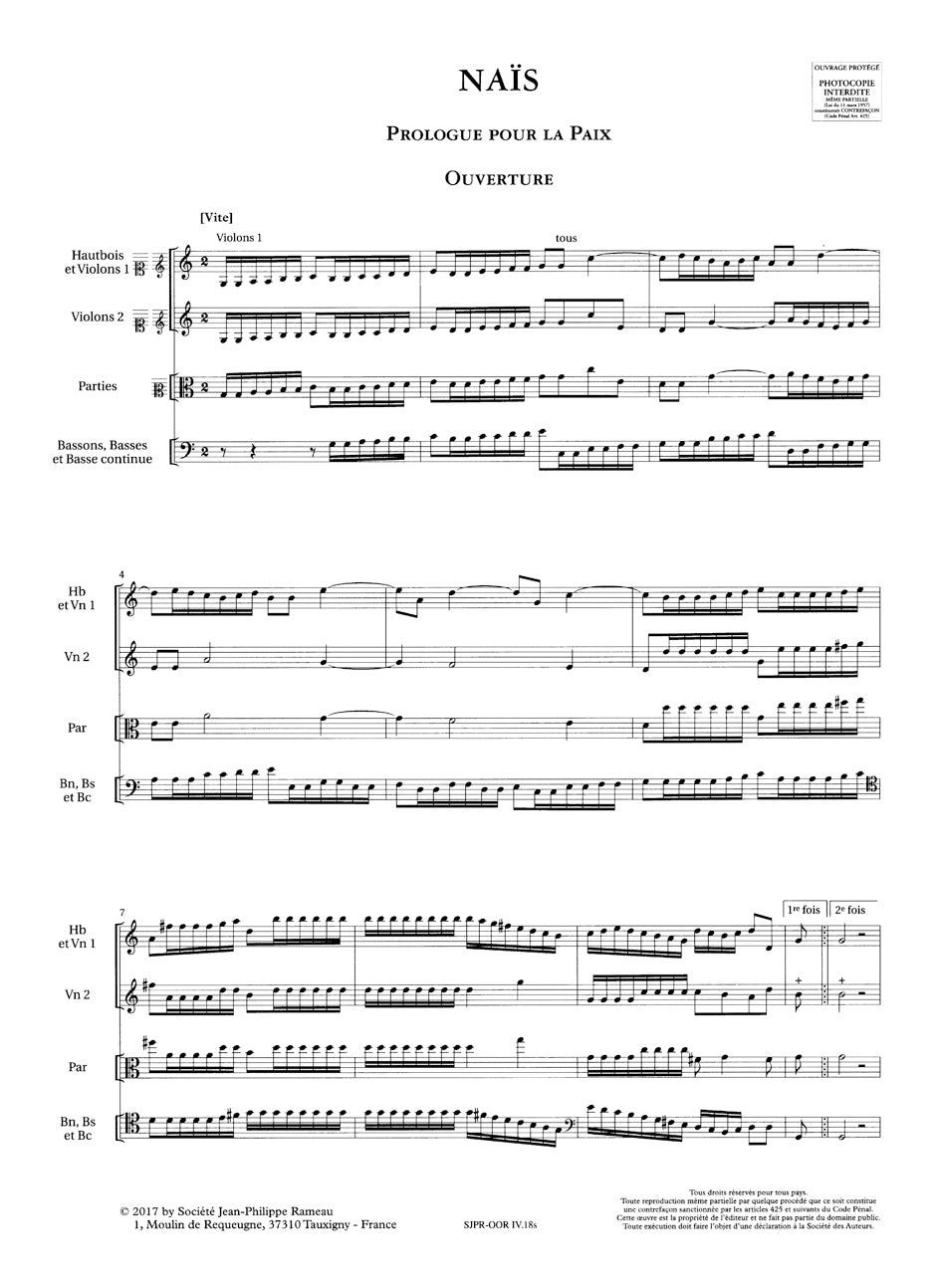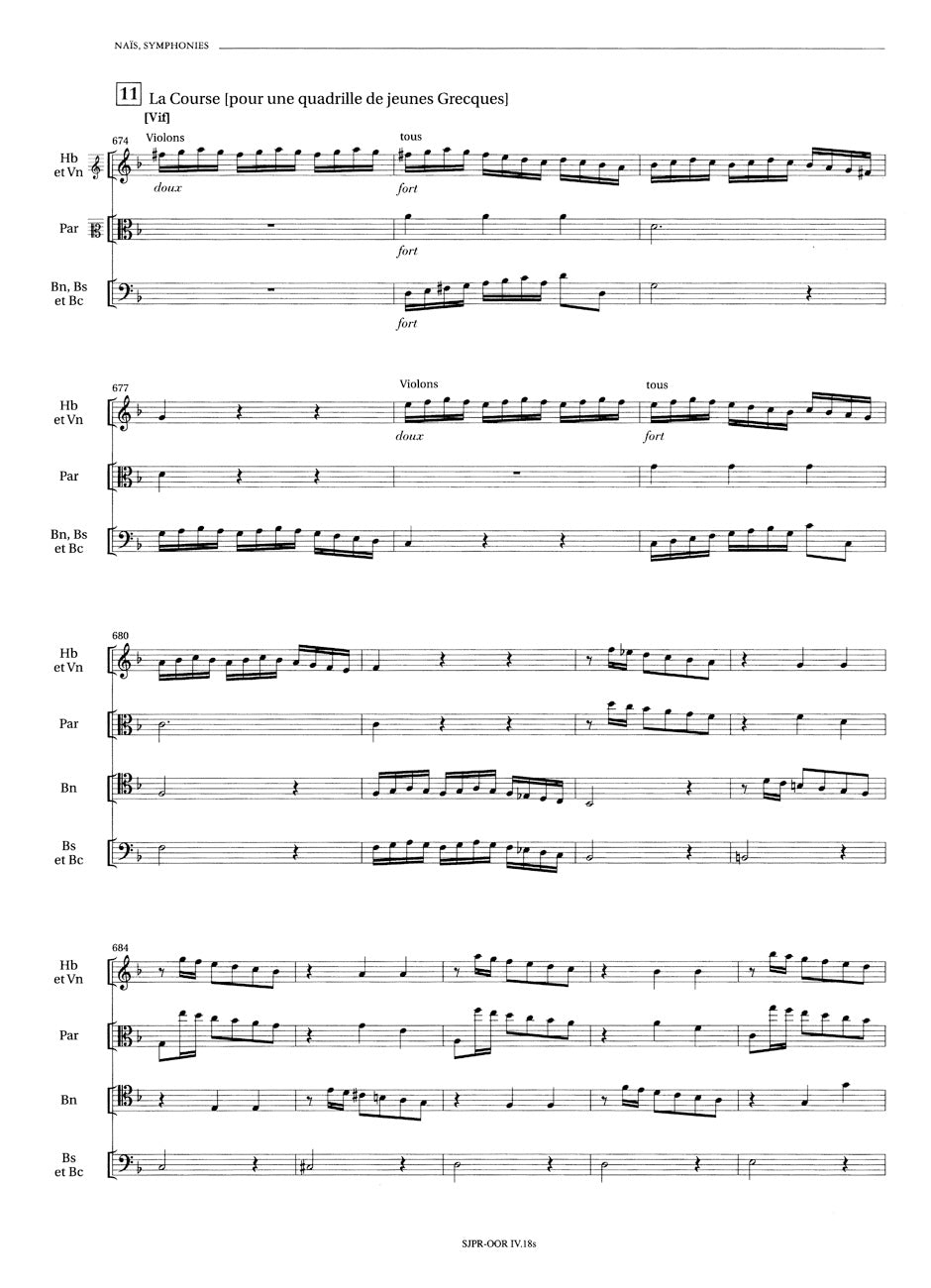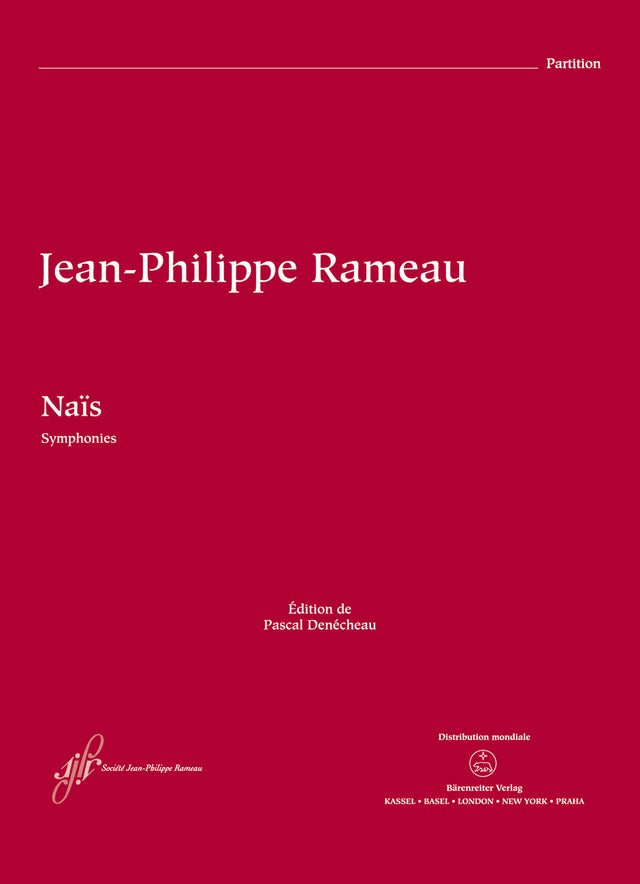Rameau: Symphonies from Naïs, RCT 49
Expected to ship in about a week.
- Composer: Jean-Philippe Rameau (1683-1764)
- Format: Full Score
- Instrumentation (this edition): Orchestra
- Originally for: Opera
- Work: Naïs, RCT 49
- ISMN:
- Size: 9.6 x 13.0 inches
- Pages: 85
- Urtext / Critical Edition
Description
The opera Naïs received its premiere at the Académie Royale in the Palais-Royal, Paris, on 22 April 22 1749 to celebrate the signing of the Treaty of Aix-la-Chapelle. It was revived in August 1764, shortly before Rameau's death and achieved great success as a 'peace opera'. This scholarly-critical edition, published by Pascal Denécheau in the "Opera Omnia Rameau", is the fruit of a meticulous comparison of every known musical source. The main body of the edition presents the version pronounced valid by Rameau for the 1749 performances. The appendices contain those passages that he deleted during the 1749 rehearsals and all the changes he made for the new production of 1764. It is here, and especially in the ballets, that Rameau reveals his consummate mastery of the orchestra.
- Instrumental numbers in order of performance, but also grouped by key in the list of contents, enabling them to be combined freely into orchestral suites
- Based on the first scholarly-critical edition, published as part of "Opera Omnia Rameau"
- Subdivisions and bar numbers of the OOR volume retained to facilitate work with the full score and Critical Commentary
- Published with performance material on hire
Publishers use a lot of words to describe what they sell, and we know it can be confusing. We've tried to be as clear as possible to make sure you get exactly what you are looking for. Below are descriptions of the terms that we use to describe the various formats that music often comes in.
Choral Score
A score for vocalists that only contains the vocal lines. The instrumental parts are not there for reference. Generally, cheaper than a vocal score and requires multiple copies for purchase.
Facsimile
Reproductions of the original hand-written scores from the composer.
Full Score
For ensemble music, this indicates that the edition contains all parts on a single system (there are not separate parts for each player). In larger ensembles, this is for the conductor.
Hardcover
Hardbound. Generally either linen-covered or half-leather.
Orchestral Parts
Similar to a wind set, this is a collection of parts. In the case of strings, the numbers listed are the number of copies included, though generally these are available individually (often with minimum quantities required).
Paperback
When publishers offer multiple bindings (e.g. hardcover) or study scores, this is the "standard" version. If you're planning to play the music, this is probably what you want.
Performance / Playing Score
A score of the music containing all parts on one system, intended for players to share. There are not separate parts for each player.
Set of Parts
For ensemble music, this indicates that there are separate individual parts for each player.
Solo Part with Piano Reduction
For solo pieces with orchestra, this is a version that contains a piano reduction of the orchestra parts. For piano pieces, two copies are typically needed for performance.
Study Score
A small (think choral size) copy of the complete score meant for studying, and not playing. They make great add-ons when learning concertos and small chamber works.
Vocal Score
A score prepared for vocalists that includes the piano/organ part or a reduction of the instrumental parts.
Wind Set
For orchestral music, this is a collection of wind and percussion parts. The specific quantities of each instrument are notated.
With Audio
In addition to the printed music, the edition contains recordings of the pieces. This may be an included CD, or access to files on the internet.
With / Without Fingering (Markings)
Some publishers prepare two copies - a pure Urtext edition that includes no fingering (or bowing) suggestions and a lightly edited version that includes a minimal number of editorial markings.





